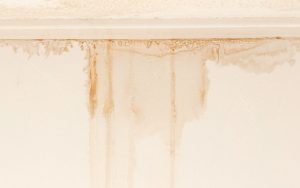Water damage, whether caused by a flooding river, excessive rain, a burst plumbing or sewage pipe or other forms of inundation, can very severely affect basements and not only the items stored there, but the walls and the floor as well. During these unfortunate events, the structural components of the basement and the objects kept there come into contact with more than just clean water – the water associated with severe incidents is usually contaminated, so whatever gets soaked in that dirty water needs to be decontaminated and treated specially. One of the basement components that are usually the most severely affected are the floor, the drywall and the basement wall behind the gypsum panels and in most cases, they all need to be removed and replaced after the space has been cleaned and is completely dry. Here are some more things that you should know about drywall affected by a flood.
How the Drywall Reacts to the Exposure to Water
Drywall is made from gypsum, paper and additives, usually resin and clay. The resulting porous material absorbs liquids, getting completely soaked when it is exposed to a substantial quantity of water, such flood water. Saturation with water causes irreparable damage to drywall – in many cases, the damage is visible, manifesting in the form of small or large, damp patches if the exposure of water was moderate and in the form of severe deformation, such as bulging, sagging and collapse if the drywall has been exposed to a substantial amount of water.
Drywall that has been exposed to flooding suffers not only structural damage – the exposure usually has delayed consequences as well, such as the appearance of mold and rot in the room. The problem appears as dark spots and patches on the exterior as well as on the interior side of the drywall panels. While the exterior surface of the drywall might be effectively cleaned with biocide substances and other chemicals, the interior surface is impossible to clean, therefor the damaged material needs to be placed.

The Process of Flood Damage Repair
The first step in the damage recovery process, after the flow of water has stopped, is to disconnect any utilities that pose risks. In the next phase, the basement needs to be completely emptied – accurate damage assessment is possible only if the space can be properly inspected, therefore you will have to remove all the objects from the basement. When the basement is empty, you need to inspect the floor and the drywall for signs of damage. It might be a good idea to talk to and hire professional water restoration companies near me for the job – these specialists will be able to identify every damaged component in the basement and they will also know how to fix the damage. The process usually involves the partial or complete removal of the drywall and the floor, followed by the treatment of the deeper layers of the wall and the floor to remove any contamination. After the decontamination, you will need to wait for a couple of weeks for the basement to dry completely before you can install the new floor and drywall.
